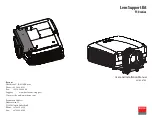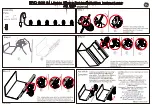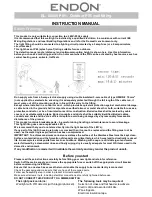
31
Model S4000TH
6.0 Troubleshooting
CAUTION:
Component level repair must be undertaken either by General Monitors’ personnel,
or by competent authorized service engineers. SMT PCB repair shall only be
performed at a General Monitors’ facility. Failure to comply with this requirement
will invalidate the warranty.
Be sure to inhibit or disconnect external alarm wiring before making any check, which might
send the unit into alarm.
6.1 Fault Codes and Their Remedies
The S4000TH has self-diagnostics incorporated into the microprocessor’s program. If a fault is
detected, the output signal drops to 0 mA, the fault relay de-energizes and a fault code is
displayed. The output signal informs a remote display module that the S4000TH is in the Fault
Mode. The display indicates a fault code that can be viewed at the sensor site. Refer to section
9.3.3 for more information on analog output values.
There are nine fault conditions that are monitored by the microprocessor as follows:
6.1.1 F2 - Failed to Complete the Calibration
This fault occurs if the unit is placed in the calibration mode and no gas is applied within twelve
minutes, or if gas is left on for more than twelve minutes.
ACTION
- Remove gas, if present. Apply magnet to GM logo on the cover to clear fault. Re-
calibrate, if necessary.
6.1.2 F3 Flash Checksum Error
This fault indicates that the contents of the S4000TH’s program memory have changed. This
usually occurs when powering the unit up after a lightning strike or large voltage transient on
the power or signal lines to the unit.
ACTION
- The unit must be returned to the factory or authorized service center for repair.
6.1.3 F4 - Sensor Heater Open Error or Sensor Amplifier Error
This fault indicates that either one of the remote sensor leads is open or shorted or that the
sensor has drifted greater than –10% of the reading. The S4000TH has an additional protection
feature. If any of the sensor wires are shorted to ground, the sensor power is turned off. After
one minute the power turns back on. If the short is still present, power is quickly turned off.
ACTION
- Check the integrity of all sensor connections, and ensure that the cable from the
S4000TH to the remote sensor is not damaged. If all sensor leads are connected
properly, attempt to re-calibrate the unit. If calibration fails, replace the sensor and
re-calibrate.
NOTE:
Anytime a sensor is replaced, the unit should be disconnected from all alarms as the
unit may go upscale upon power-up.
















































